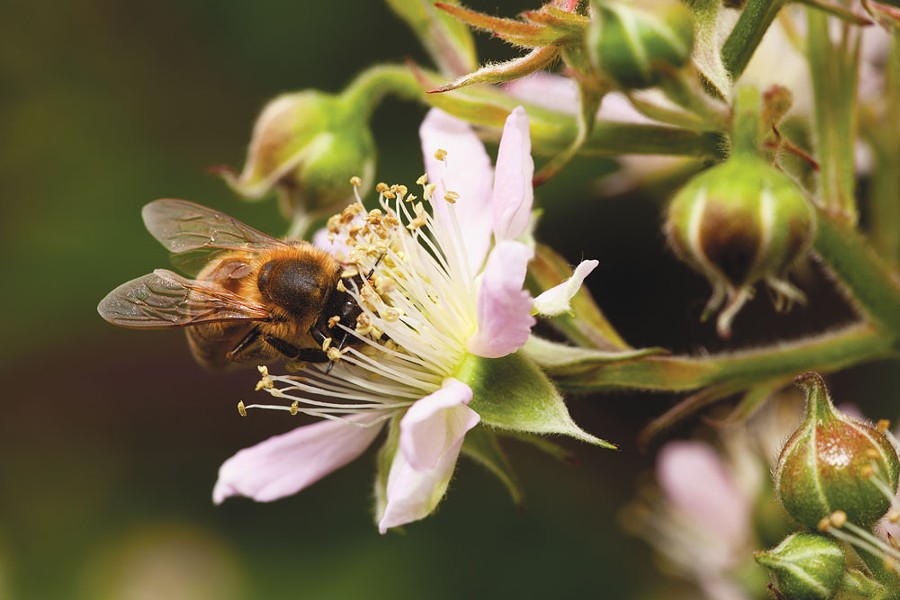If you're anything like me, this is the time of year you live for. The garden is popping, flowers are blooming, and there's more zucchini than you know what to do with. I could make this a very short column and just say: Relax! Take a nap in the sunshine and eat some berries. You earned it.
But there are still some important things to accomplish this time of year. You probably know this. In fact, you might be totally overwhelmed. So, for this month's column, I thought it would be nice to share my midsummer checklist: the stuff I do every year at this time to increase yields, beautify the garden and help resist disease and insect infestations later in the season.
Weeding. Maybe this is obvious. Weeding needs to happen most of the time anyway. But right now, it might be more crucial. If you have let the weeds go and they are starting to crowd out your veggies, now is your chance to get them out of there before they really start to inhibit air circulation, causing squash and tomatoes to rot, and encouraging aphids and mold. So get out there early in the morning before the heat sets in and take care of the weeds.
Deadheading. Sunflowers, calendula, nasturtiums, zinnias and most other garden flowers will bloom much longer if you go through and remove the spent flowers. If your timing is right, and depending on which plants you're dealing with, this can double as an herb or seed harvest.
Harvesting. This connects to deadheading. Even if you can't eat all of those zukes, pick them anyway. You'll get more zukes, for longer. Pick rotten strawberries and tomatoes. Get that slimy stuff out of the garden to remove the breeding ground for pests and to make space for fresh, healthy fruits. This is also a perfect time to harvest herbs, like rosemary and oregano, when vegetative growth is at its prime but flowers haven't fully matured. Harvest, bundle and hang them in the kitchen to dry.
Cut the Guards. If you have wild blackberries that you enjoy, now is the time to "cut the guards." Look at the hedge. Do you see how the clusters of flowers have thick, spiny, non-fruiting brambles that grow in front of them? Cut those off and the berries to come will get better sun for ripening.
Thin Fruit Trees. Apples, pears, plums, peaches ... all of these will yield larger, healthier fruits if you go through and remove 20 to 50 percent of the unripe ones. Anywhere you see two fruits sashed together, they are competing for light, water and nutrients. Carefully pinch off the smaller one.
Clean Up. Go through and get rid of junk, discarded pots, old piles of weeds and compost. These piles harbor slugs, mold spores and a plethora of other organisms that can cause harm to your garden. Remember that air circulation is just as important as soil, water and sun. Aphids, powdery mildew, black mold — these can be more easily avoided in a garden with plenty of breathing room. By cleaning up the space and eliminating junky air-traps, you protect your plants and also make the space more beautiful for those afternoon yard-naps.
Sow Fall Crops. Now is the time to get your next succession in the ground. As you clear space from weeding, harvesting and cleaning up, filling the ground with new seed helps prevent more weeds from coming in. Direct-sow sunflowers, lettuce, spinach, kale, green beans, peas, squash, beets, amaranth, nasturtium — pretty much anything you planted in early spring is good to go again. Just make sure to keep the beds evenly watered while the seeds are germinating. You can also sow in pots and transplant later when there is more room in the garden, after summer crops are finished.
Check Water. As we move into our driest season, it is important to make sure your automatic watering systems are working properly. Check for leaks, clogs and anything that needs to be repaired so you don't have any unpleasant surprises later.
Mulch and Fertilize. Once you've cleaned it all up, give everything a fresh feeding of fertile compost (or organic fertilizer) and cover with a nice neutral mulch to hold in moisture and keep out weeds. See my article, "Mulch Much," from last year for more information about which mulches to choose and why.
Relax! Honestly, this is just as important as the rest of it. When you take time to "do nothing" in the space you have worked so hard to create, your subconscious mind remembers why you love to garden. Your nervous system settles down. Sometimes I have to stop, lay down, and make sure that all of my garden time isn't spent hunching over, killing stuff, whacking stuff around ... working. This is your Eden — enjoy it.
Heather Jo Flores is the author of Food Not Lawns, How to Turn Your Yard into a Garden and Your Neighborhood into a Community. She lives in Southern Humboldt and contributes once-monthly to Down & Dirty. She welcomes your questions and suggestions for future issues.


Comments